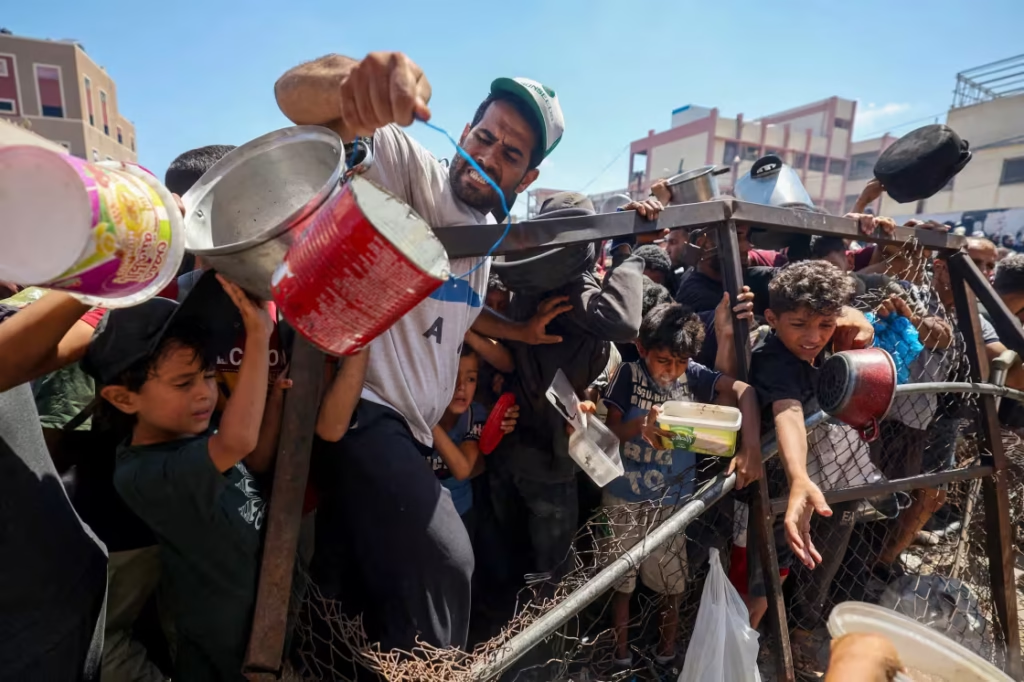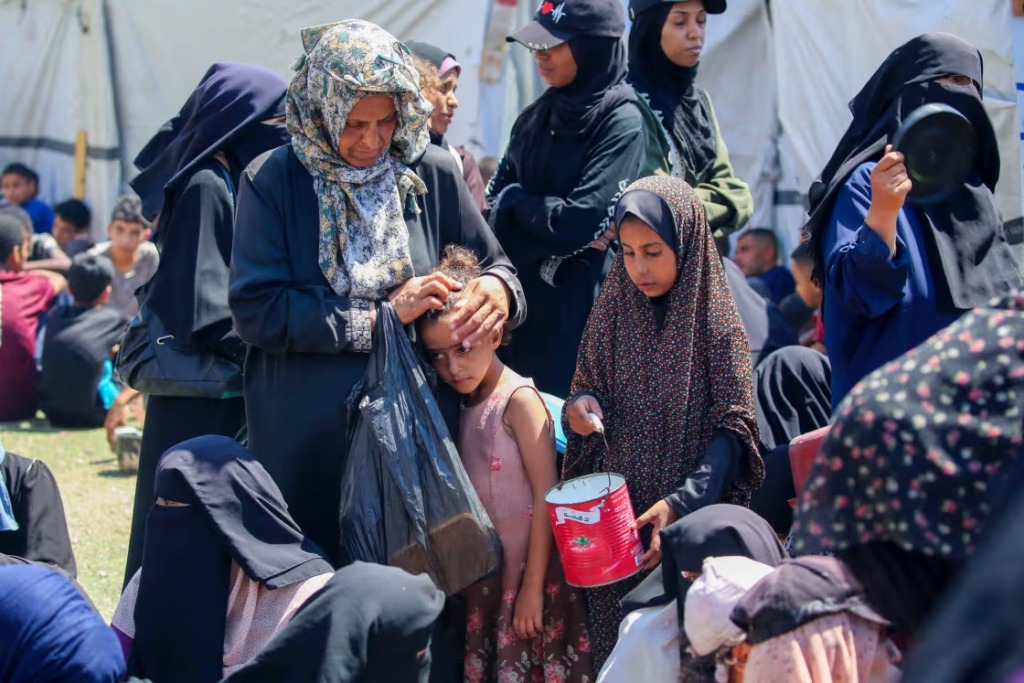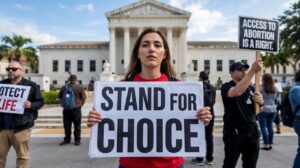Palestinians shot dead while seeking food aid in Gaza, according to local health officials and witnesses, as dozens were killed near U.S.- and Israeli-backed distribution centers this weekend.
Palestinians shot dead while seeking food aid in Gaza (July 19–20, 2025) marks another deadly chapter in Gaza’s humanitarian crisis. As Israel asserts that its troops opened fire on suspicious crowds near food distribution sites, Palestinian authorities insist the shootings were unprovoked and indiscriminate. Hospitals in Khan Younis, Rafah, and Tel al‑Sultan report a rising death toll—ranging from 32 to 38—among desperate civilians waiting for essential supplies. This tragedy underscores a broader pattern that has claimed nearly 900 victims in just six weeks at aid hubs.

What Happened
Palestinian hospitals confirmed at least 32 people were shot and killed, with over 100 injured Saturday morning near Gaza Humanitarian Foundation (GHF) food distribution centers in southern Gaza. Independent outlets like Reuters reported 36 fatalities in Khan Younis, stating that Israeli troops allegedly opened fire without warning.
Witnesses near Teina and Shakoush describe a scene of chaos: panicked crowds shouting “food, food” were met with live fire. “It was a massacre… they just opened fire,” said Sanaa al‑Jaberi. Ahmed from Nasser Hospital corroborated these accounts: “Most casualties were shot in the head and chest.”

Official Positions
Israeli military: Claims troops fired warning shots at “suspects” moving toward the secured Zone, stating the shootings happened before aid distribution began. The IDF says it’s investigating the incident.
GHF: Denies any shootings at its sites, calling the casualties a result of civilians venturing out at night, far from the operating hours of aid centers.
United Nations & NGOs: The UN reports 875 deaths near aid sites since late May—most attributed to live gunfire—claiming GHF’s model is dangerous and “militarized.” Washington Post and UN experts have characterized the aid rollout as “foreseeably flawed.”
Human Cost & Healthcare Crisis
The fatalities add to a staggering tally—over 58,000 Palestinians have been killed since the war began in October 2023, with more than half being women and children, according to Gaza’s Health Ministry.
Hospitals in Khan Younis are overwhelmed. Nasser Hospital alone received dozens of bodies and more than 70 wounded, many shot in vital organs, highlighting critical shortages of staff, equipment, and emergency supplies.
Broader Context & Historic Precedent
This isn’t an isolated tragedy. A mass shooting in February 2024, now known as the “Flour Massacre,” left at least 118 dead as Palestinians waited for aid — a horrifying echo of current events. Today’s fatalities are part of a rising toll: over 875 aid-seeker deaths by July 13, according to United Nations figures.
UN agencies, over 170 NGOs, and human rights experts blame GHF’s militarized model and operation by private contractors (like Safe Reach Solutions), alleging systematic risks to civilians.
What Happens Next?
Aid reform: The UN has demanded an overhaul of GHF’s operations, calling for more distribution sites, proper civilian protection, and separation from military forces. The Guardian
Israeli probe: The IDF says it is reviewing the shooting, though past investigations into similar incidents have not resulted in public accountability.
Ceasefire efforts: Talks in Doha remain stalled. Meanwhile, intermittent airstrikes continue, and humanitarian corridors remain contested, escalating the risk to civilians.
Conclusion
The Palestinians shot dead while seeking food aid in Gaza tragedy spotlights a grim intersection of humanitarian failure and militarization. With hundreds more casualties in recent weeks, the tense dynamic between aid operations and armed forces demands immediate review. Without structural reforms—from civilians‑safe aid distribution to genuine ceasefire enforcement—more tragic cycles are almost inevitable.
Subscribe to trusted news sites like USnewsSphere.com for continuous updates.





